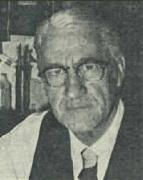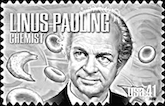IMPORTANT: Information provided is intended for educational purposes and is not intended to be medical advice nor offered as a prescription, diagnosis or treatment for any disease, illness, infirmity or physical condition. Always consult your own medical provider about your health and medical questions before making any health related decision. These statements have not been evaluated by the Food & Drug Administration.
 Dr. Frederick R. Klenner B.S., M.S., M.D., F.C.C.P. Reidsville, North Carolina - 1907 - 1984
Dr. Frederick R. Klenner B.S., M.S., M.D., F.C.C.P. Reidsville, North Carolina - 1907 - 1984
2005 Orthomolecular Hall of Fame Inductee - Biography - Summary Tribute - Publications - References
"Orthomolecular" is essentially another word for "nutritional." - "Vitamin C is the safest substance available to the physician."
"Some physicians, would stand by and see their patient die rather than use ascorbic acid because, in their finite minds, it exists only as a vitamin."
Biography (1)
Born in Pennsylvania, Dr. Klenner received his medical degree from Duke University in 1936. After three years post-graduate training to specialize in diseases of the chest, Dr. Klenner continued his general practice. “His patients were as enthusiastic as he in playing guinea pigs to study the action of ascorbic acid. The first massive doses of ascorbic acid he gave to himself. Each time something new appeared on the horizon he took the same amount of ascorbic acid to study its effects so as to come up with the answers’ (Journal of Applied Nutrition, 23: 3 & 4, 1971).
Abram Hoffer writes: “In the early 1950s, Dr. Fredrick Klenner began his work with megadoses of vitamin C. He used doses up to 100 grams per day orally or intravenously. In clinical reports he recorded the excellent response he saw when it was given in large doses. For example, polio patients given vitamin C suffered no residual defects from their polio. A controlled study in England on 70 children, half given vitamin C and half given placebo, confirmed that none of the ascorbatetreated cases developed any paralysis while up to 20 percent of the untreated group did. This study was not published because the Salk Vaccine had just been developed and no one was interested in vitamins. Dr. Klenner’s work was ignored.”
Dr. Klenner was the first physician to emphasize that small amounts of ascorbate do not work. He said, “If you want results, use adequate ascorbic acid.” As a result of seeing consistent cures of a great variety of viral and bacterial diseases with huge doses of vitamin C, he published over twenty medical reports. Orthodox medicine’s rejection of his lifesaving work stands as a reminder to all medical mavericks practising today. “Some physicians,” Klenner wrote, “would stand by and see their patient die rather than use ascorbic acid because, in their finite minds, it exists only as a vitamin.”
Biography (2)
A native of Pennsylvania, Dr. Klenner attended St. Vincent and St. Francis College, where he received his B.S. and M.S. degrees in Biology.
He graduated “magna cum lauda” and was awarded a teaching fellowship there. He was also awarded the college medal ‘for scholastic philosophy.
There followed another teaching fellowship in Chemistry at Catholic University, where he pursued studies for a doctorate in Physiology.
Dr. Klenner then “migrated” to North Carolina and Duke University to continue his studies. He arrived in time to use his knowledge in Physiology and Chemistry to free the nervous system of the frog for a symposium, by immersing the animal in 10% nitric acid. Taken in tow by Dr. Pearse, chairman of the department, he was finally persuaded to enter the school of medicine. He completed his studies at Duke University and received his medical degree in 1936.
Dr. Klenner served three years in post-graduate hospital training before embarking on a private practice in medicine. Although specializing in diseases of the chest, he continued to do General Practice because of the opportunities it afforded for observations in medicine. His patients were as enthusiastic as he in playing “guinea pigs” to study the action of ascorbic acid. The first massive doses of ascorbic acid he gave to himself. Each time something new appeared on the horizon, he took the same amount of ascorbic acid to study its effects so as to come up with the answers.
Dr. Klenner’s list of honours and professional affiliations is tremendous. He is listed in a flock of various “Who’s Who” registers. He has published many scientific papers throughout his scientific career.
Dr. Klenner was a:
Fellow: The American College of Chest Physicians
Fellow & Diplomate: The International College of Applied Nutrition
Fellow: The American Association for the Advancement of Science
Fellow: The American College of Angiology
Fellow: The American Academy of Family Practice
Fellow: The Royal Society of Health (London)
Fellow: International College of Angiology
Founder-Fellow: American Geriatrics Society
Fellow (Honorary): The International Academy of Orthomolecular and
Preventive Medicine
